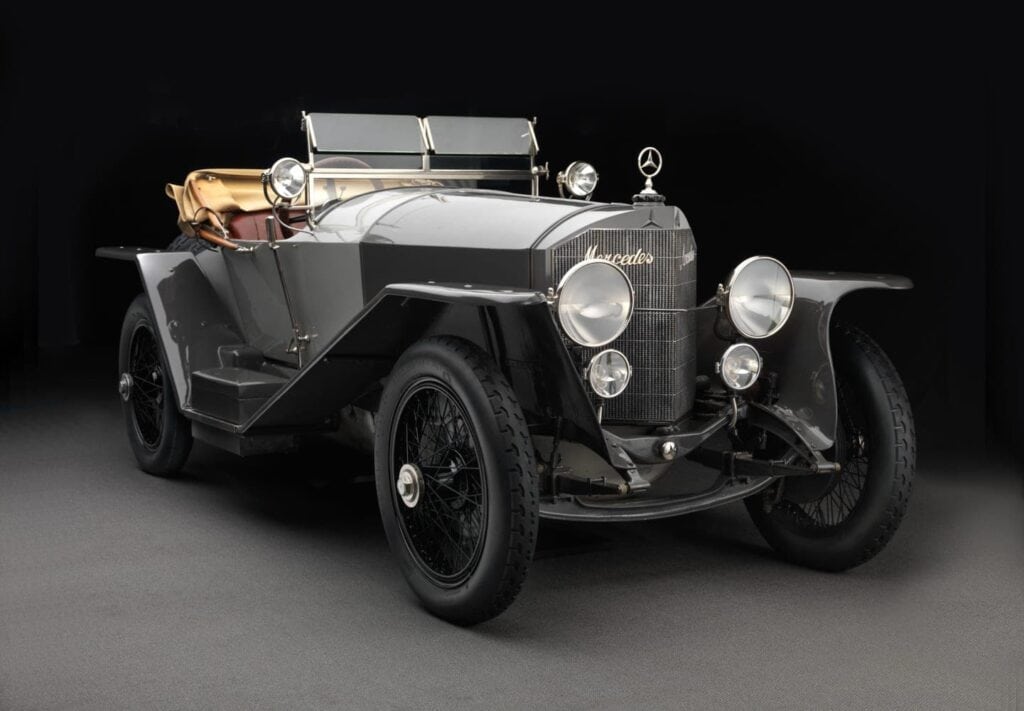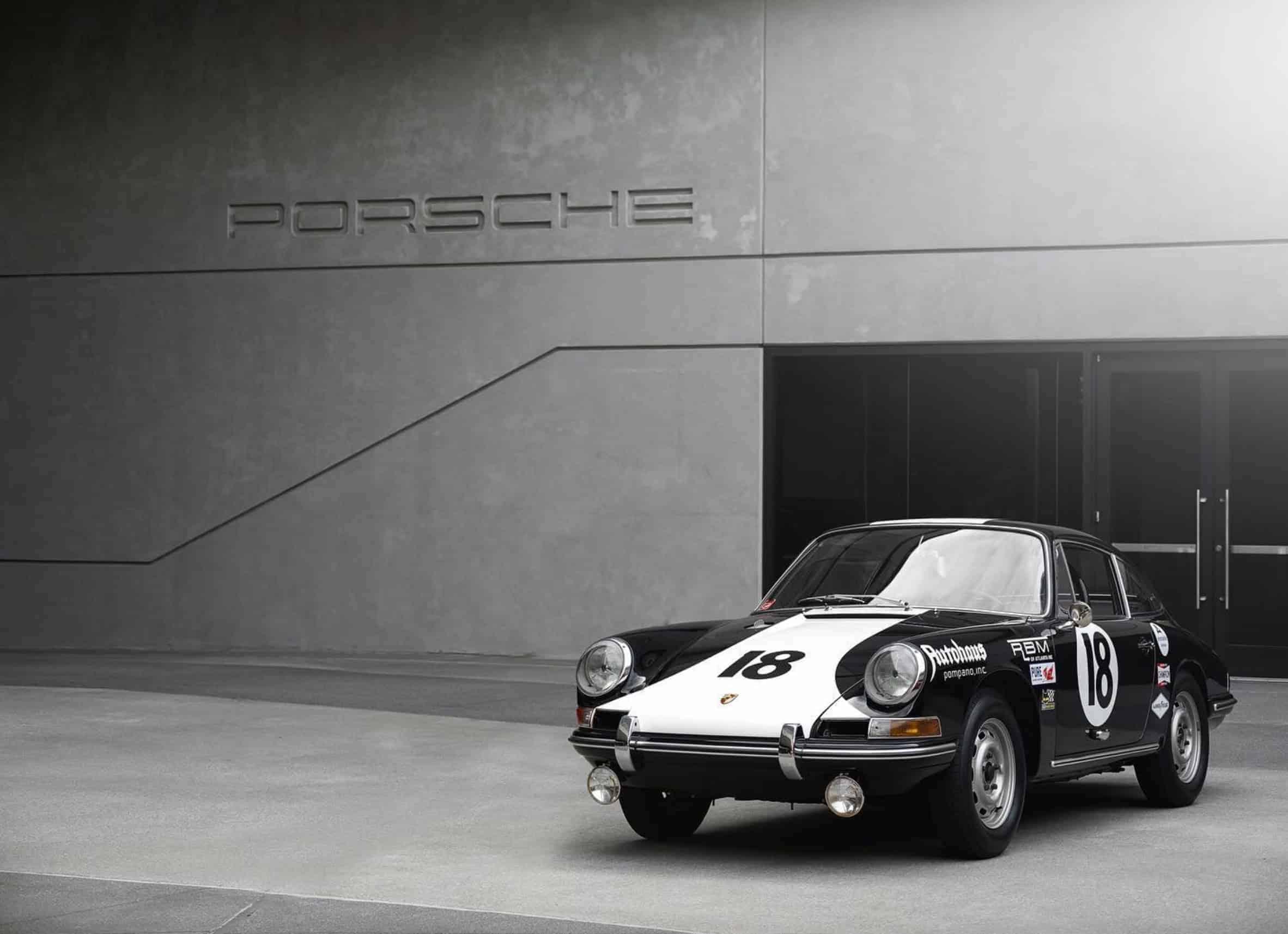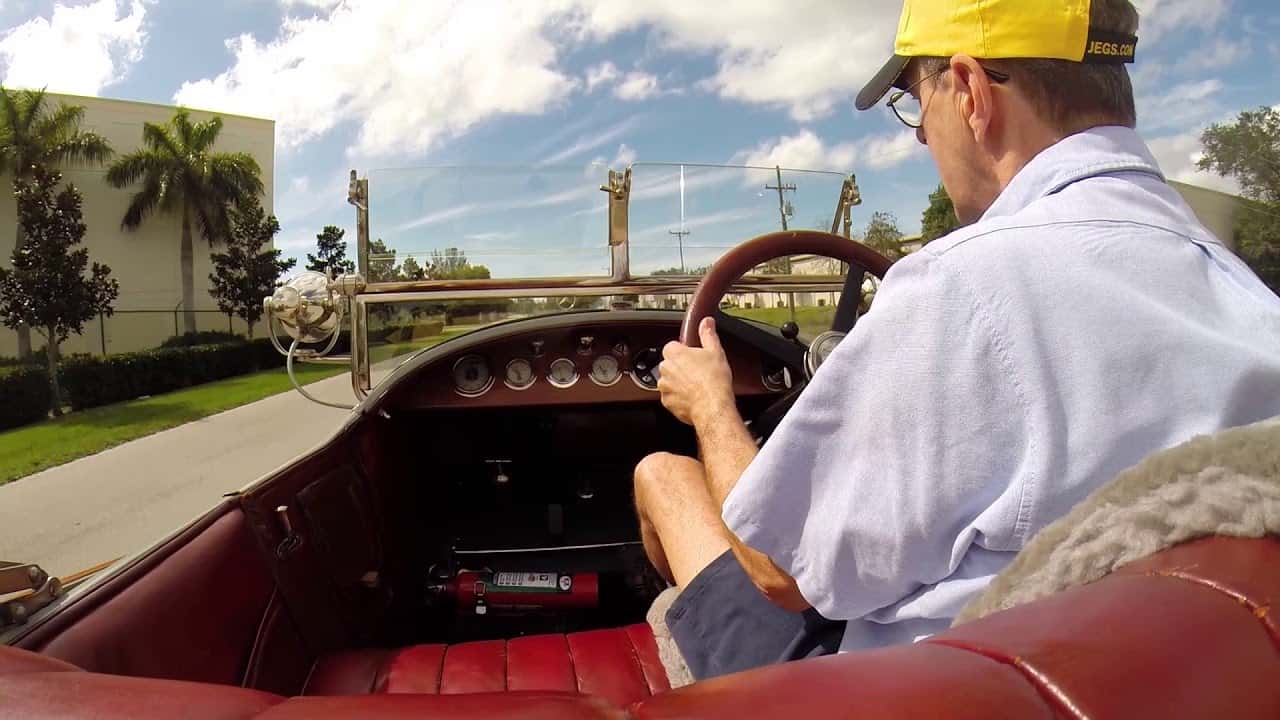Here is an example of a flagship Mercedes touring car – before Mercedes-Benz. Daimler-Motoren-Gesellschaft, or DMG, was founded by engineers Gottlieb Daimler and Wilhelm Maybach in 1890. A visit to DMG’s premises in 1896 was enough to convince entrepreneur Emil Jellinek to start selling their Daimler automobiles. Jellinek converted Europe’s elite into customers by entering a team of Daimler cars in races and hill climbs along on the French Riviera. Jellinek’s team carried the name of his eldest daughter, Mercédès. In 1902, DMG rebranded their automobile marque with the Mercedes name.
In 1914, DMG introduced the top-of-the-line Mercedes Type 28/95 PS. The lightweight and powerful design of its 6-cylinder engine was taken from DMG’s aircraft division. When racing began again in Europe after World War I, the Type 28/95 was developed further by DMG employees Paul Daimler (son of Gottlieb) and Max Sailer. The chassis was shortened, the brakes improved, and the center of gravity lowered. Sailer then raced the car in the 1921 Targa Florio, winning the production class and nearly taking victory outright. The competitive upgrades were applied to the production model as a “Sport” version.
This 28/95 Sport, chassis no. 26854, was entered by the works team at events in 1921 and 1922. Factory driver Otto Salzer won the Zbraslav-Jíloviště Hill Climb near Prague in this car. It was later used by Mercedes dealer Theo Wiemann to win events in the Netherlands. Around 1924, the chassis was sent back the factory and rebodied as a four-seat Sport Phaeton in preparation for sale as a passenger car. The 1923 inflation crisis in Germany prompted DMG to prepare many cars for export; this one was sent to New York. Eventually, the faltering economy forced the merger of DMG with its largest competitor, Benz et Cie.
By 1923, both Wilhelm Maybach and Paul Daimler had left DMG. The development of Mercedes style and performance was shepherded by a new Chief Designer, Ferdinand Porsche. A line can be traced directly from the Type 28/95 to Porsche’s final design for the company, the Mercedes-Benz SSK (also on display in this gallery).


